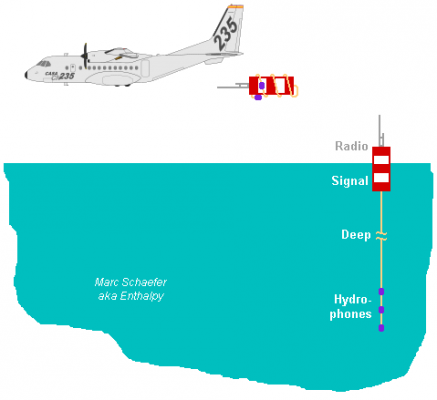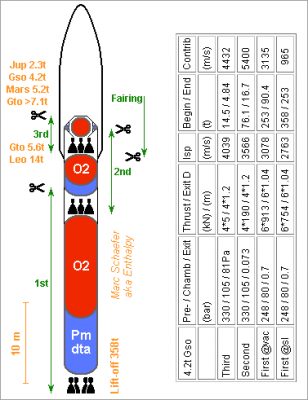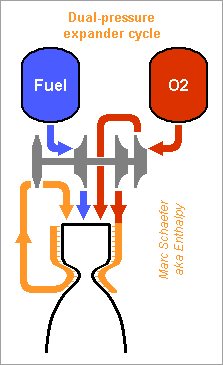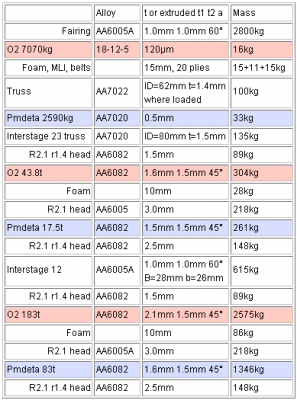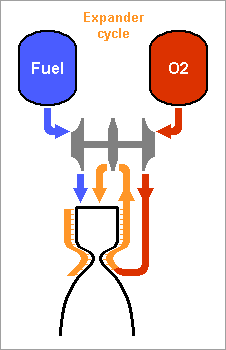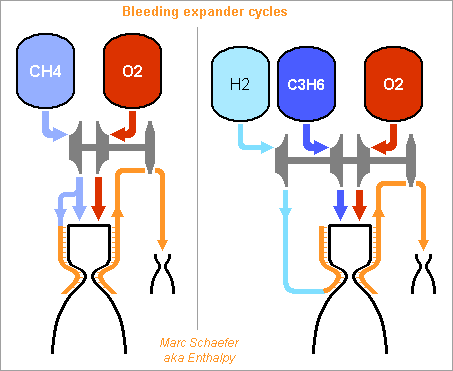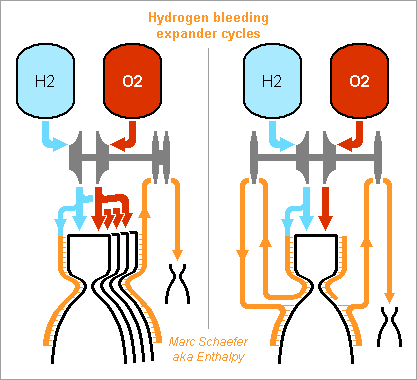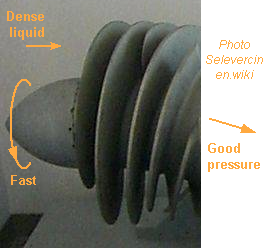-
Posts
3887 -
Joined
-
Last visited
-
Days Won
1
Content Type
Profiles
Forums
Events
Everything posted by Enthalpy
-
There is absolutely nothing that works that little bit in the travelling wave reactor - so we don't even need to discuss the wrong claims about its advantages. Though, some crooks were smart enough to sell it, without any sensible technical basis, to Bill Gates. The good news is that Mr. Gates can perfectly survive with a few millions less. Sorry, I've neither the Internet volume nor the time for it. Anyway, "generation IV" is a marketing name for a dozen of very different reactors, some completely impractical, others with blatant drawbacks. Claiming "generation IV is safe" while it designates such a diversity isn't very sensible. What's absolutely certain: any nuclear reactor, whatever its design or "generation", burst by a bomb or a kinetic impactor, pollutes as much as Chernobyl. Putting an "anti-nuke" tag on a few propagandists is easy, and the nuclear industry pays many people full-time as propagandists. I can just as well tell that I was a nuke enthusiast until I realized the drawbacks. Safe renewables run every day. Wind electricity is already cheaper than nuclear one. In Solar thermal plants, energy is already stored to provide electricity during night. Convincing ideas, both technically and economicaly, exist to store electricity; we must develop them, and this is a matter of millions, not tens of billions for nukes.
-
Reactors and inherently safe before building them. At worse, their drawing catches fire. The rest is bullshit. Safety comes from good design which results from engineers' experience. It does not result from a few general ideas, and far less from wishes and from CEO claims. Though, as each company makes a new reactor design every third decade, its engineers have zero experience, hence their design is unsafe, if not completely meaningless. Every reactor design is a first attempt, with all the related faults. I also read that BS of inherent safety about the EPR. Meanwhile, we heard that - The control rods would have been expelled by an overpressure in the vessel; - The supervision network and software were not separated from the control; which are both absolute beginners' mistakes that wouldn't have been accepted in a chemical plant for instance. Not only did such gross mistakes pass through the developer company, they also passed through the national committee for nuclear safety. Shame, it were two foreign committees which saw the gross flaws and said stop. When you hear someone claim safety, just remember that prior to Fukushima, convincing people demonstrated that the risk of loosing all power needed to cool a reactor was ludicrously small. Not only would the reactor have to stop; it would also need to lose the external power from the line, and all the redundent backup generators - unimaginable. Remember as well that a hydrogen explosion had been described in detail as a risk, and parries proposed - but hydrogen explosion was considered a frenzy scenario invented by a paranoid green. If that weren't enough, you may think at what happens if an enemy armed force bombards a nuclear reactor, as it uses to do at the beginning of a war. Bunker breaker bombs easily pierce any reactor and disperse its radioactivity, in a Chernobyl-sized catastrophy multiplied by the number of plants. Ton-sized kinetic energy weapons would scatter a reactor more widely, and almost certainly let detonate a fast-neutron reactor like a plutonium bomb.
-

Algae biofuel- When will it become available to consumers
Enthalpy replied to faslan's topic in Engineering
Algae appear to have advantages. Fine. I buy when available. But remember that before a technology is on the market, anything can happen, the most common result being "too expensive after all". Another hurdle: taxes make most of Diesel oil's cost presently. Vegetable oils are already cheaper than Diesel oil (in Europe) because of lower taxes on food, so many governments hinder the use of vegetable oils. For an alternative to break through it should better be cheaper than Diesel oil prior to taxes, and that's damned hard. -
AA6015 should be excellent against corrosion, with only soft aluminium alloys being better. The other... it all depends on which one it is. At AA2024 ou AA7075, you've lost. Corrosion protection: remove salt is a good idea, because chlorine ions are the one enemy of aluminium. Paint isn't very efficient on aluminium, and may promote corrosion if the composition doesn't fit. The proper help is anodization; again, it's excellent on AA6015, fair but useful on AA7xxx series, not so efficient on AA2xxx. Anodization is a cheap operation, but usually done in an industrial context, so it all depends on your diplomatic skills. Normally, the part is fully stripped of any coating before. On AA6015 the result will be clear if desired, on AA7xxx it would be dark grey.
-
Yes. Sonobuoys were old technology when I developed a helicopter-borne sonar two decades ago, but in this search they seem to fit the task better. I suppose that existing buoys listen to much lower frequencies, because 37.5kHz propagates badly in the Ocean. Active sonars work at very few kHz or less, passive ones even target boat screws (probably their flow noise). As for sensitivity: this data is hard to grasp... Ships tow a winged sonar, far from the screw and hull, and deep in cold water away from the noisy surface. A towed sonar has the advantage of length and possibly width, that permits to filter out noise from unwanted directions. But an immobile buoy has less flow noises, has no towing ship, and can be kilometer deep. My gut feeling favours the buoy, by far. It's also much a matter of signal processing. If the buoys were developed 30 years ago as expendable items, they don't have subtle software.
-
One acoustic locator that presently searches for the blackboxes' pingers of MH370 is said to detect them from about 6km range, which takes time at boat speed. A hypothetical alternative: drop listening buoys from a plane, each with 6km range and evenly spaced, which record the sound and later radio it back to the plane. That was done decades ago and looks useful with the small range of a pinger. The searched area in the Indian Ocean is 64,000 sq nm (1nm = 1852m). One doesn't need to drop one buoy for each 20 sq nm, because if a buoy drifts at 1 knt in the current or the wind, it covers 120 sq nm in 1 day, so it takes only 533 buoys. Each must have hydrophones and signal-processing capability. I imagine the acoustic part hangs deep under the float. The transmission could perhaps look like Gsm - transmission to a plane has a longer range than on the ground. The buoy should best weigh very few kg, with a float as a big bottle. Depending on the search area, the cable could be >1nm long, since cold water and silence help. The plane needs an automatic dispenser. It's not cheap development, but I see nothing expensive in the series production, and the search for MH370 has already cost over usd 50M http://www.smh.com.au/national/most-expensive-aviation-search-53-million-to-find-flight-mh370-20140404-36463.html And, so sorry for that, but the development takes more than one or two weeks. If developed without time pressure, the floats would rather be tiny sailboats with autonomous steering, to keep aligned and properly spaced, and head to a desired direction. Marc Schaefer, aka Enthalpy
-
This launcher uses hydrogen expansion cycles at both stages: a Vinci in the lighter Esc-B I describe there http://www.scienceforums.net/topic/60359-extruded-rocket-structure/page-2#entry761740 and the bleeder expander I describe there http://www.scienceforums.net/topic/82346-expansion-cycke-rocket-engines/?p=797705 The upper stage starts with 28.2t at 3000m/s below Leo. The Vinci gives it 0.65G, more than the 0.35G for Delta IV M+(5,2), so my Esc-B design can be more filled, or it can be shrinked, and the payload improves. The first stage can also nearly double with a four-chamber engine, or get side boosters. The first engine expands from 100 to 0.3bar in 2*D1,8m for 4022m/s and 2*1.60MN in vacuum, 3908m/s and 2*1.34MN at sea level. It must throttle to 50% or 40%. Jettisoned nozzle inserts, to limit the expansion to 0.8bar in the atmosphere, and larger nozzles, would gain much - or passive flow separators. The first stage has extruded tanks of AA6005A, described there http://www.scienceforums.net/topic/60359-extruded-rocket-structure/ The interstage takes t1=t2=1mm a=60° The oxygen tank, t1=2.1mm t2=1mm a=45° The hydrogen tank, t1=1.6mm t2=1mm a=45° The upper and lower heads are of 1.2mm and 1.4mm AA7022, the middle of 4mm AA6005A. With 10mm foam, the tanks weigh 6119kg or 35kg per ton of propellants. Thinner extrusions of harder alloy would improve, magnesium maybe. Add 3.5t for the engine, 0.9t for one-third of the fairing and the Esc-B shell, 2t undetailed items. Small dry masses let two stages reach Gso, Moon orbit and leave, and even a Jupiter transfer marginally. Marc Schaefer, aka Enthalpy
-
Whether tracking or retrieving the wreckage: we need both. Range is very little a matter of emitted power and consumption. It's essentially a matter of frequency, and 37.5kHz was a horrible choice for that. Again, the acoustic power reflected from a submarine is well below one microwatt, and it gets detected from hundreds of kilometers. So quite the opposite: at the proper frequency, the pinger could save power and operate longer.
-
Most aluminium alloys are weak against corrosion, including under simple rain - and road conditions can be worse, salt above all. White powder is a known result of aluminium corrosion. Especially the harder aluminium alloys in the 7000 and 2000 series corrode quickly and fail earlier than banal steel. I had put a AA7049A rod in the soil; one day later, it lost wide plates from its surface ("exfoliating corrosion"), totalling half a millimeter thickness. Steel hulls in contrast last for years in sea water. A fews alloys resist corrosion: the 1000, 3000 and 5000 series, but are very soft, and some alloys among the 6000 series, which aren't famously strong. In very limited tests, I saw no effect of galvanic couples hence am not convinced up to now. I expect carbon to do very little to aluminium - but the polymer matrix contains acids, phenols, amines and more, including chlorine from epoxy polymerization, which are better candidates to promote corrosion.
-
From the limited heat power, an expander cycle can pump more propellant to a lower pressure, and push stronger. I compare with Pmdeta, and 40MW per chamber to heat oxygen, as above. Because evaporation takes heat, one better keeps the same flow through the cooling jacket to obtain the same temperature, and injects the additional flow directly in the chamber. Under identical assumptions (pressure /2.7 across the turbine, pumps 74%, turbine 79%, injectors and jacket 88%, expansion to 0.7bar in vacuum, mix detuned by 5m/s for thrust), I get: 165kg/s propellants at 100bar, isp=319s, and 516kN per chamber 206kg/s at 80bar, isp=314s (-5s), 634kN (+23%) per chamber As the added flux doesn't pass the turbine, it needs only the injection pressure. Two pump stages save then power (and fit other rotation speeds better). 273kg/s at 80bar, 840kN (+63%) per chamber Because a stronger engine has a bigger chamber, the improvement is quicker than this comparison at constant cooling power. Marc Schaefer, aka Enthalpy ==================================================================== This launcher obtains 4.5MN at lift-off from a six-chambers engine that expands a fraction of the oxygen and injects the rest in the 80bar chamber directly. The other stages have four chambers and expand all oxygen to obtain 105bar in the chambers. Details on the sketch, click for full size: The fairing and the lower stages' structural tanks are vertical extrusions, as I describe there http://www.scienceforums.net/topic/60359-extruded-rocket-structure/ the 1-2 interstage breaks at 12MN and 13MN*m, the rest is stronger. The tanks weigh 17 and 19kg per ton of dense propellants, details here, click for full size: The 2-3 interstage is a welded hexagonal truss of aluminium tube, as is the structure of the third stage. The oxygen tank there is a balloon of brazed steel insulated with foam and multilayer sheet, and is hold by polymer belts. The Pmdeta tank is aluminium sheet welded to the truss. The inert masses would go to Gto in two stages, but Leo plus an optional third stage is more flexible and efficient. Storing oxygen for days and weeks, the third stage can go from 34.3° Leo to Gso (4432m/s), Mars or Jupiter transfer, Moon orbit and departure from there. Marc Schaefer, aka Enthalpy
-
Last time I had a parachute (in a glider, where mass counts as well) it weighed like 10kg, just from the impression. It didn't have a raft, sweet water and vitamines. That would make the ticket 1/8 more expensive. A horrible lot. Engine manufacturers invest many millions to save 1% fuel. Not only the airlines, as well the passengers would answer "1/8 is too much for an improbable accident where the parachute probably wouldn't save me".
-
We're talking only about crashes. They aren't common, but the black box serves in this case. So whether the pinger should be made audible far away relates more to "what proportion happens in deep Ocean", I'd say. While half of all crahes happen at landing and take-off, an interesting proportion of the other half happens in the oceans, as these cover most of our planet. We could make the comparison an other way: consider how many planes, boats and people try to locate MH370, or previous debris before. This looks more expensive (and money isn't the only criterion) than putting better pingers on black boxes.
-

How to Safely release DiEthyl Ether vapors in air?
Enthalpy replied to enertech's topic in Applied Chemistry
Tactful answer, I appreciate! -
6000m/s is not a flexural wave. In a publication neither. I have no time to make detailed answers to false random assertions. http://en.wikipedia.org/wiki/Structural_acoustics#Bending_Waves_in_beams_and_plates
- 96 replies
-
-1
-
Comparing the volume of the bell with the volume of the room is just nonsense as well. We're talking about acoustics, not bicycle pumps. The whole contribution brings only confusion to the subject.
- 96 replies
-
-1
-
Which was already horribly wrong. That's the very basics of a bell. Find an elementary book. Obviously, you're weak on acoustics. It looks like you don't realize that. Your long contribution here is just repeatedly wrong. In case you really made the measurements, then do they again, and better. The nodes and antinodes can be heard. As already noted, you should first learn what a flexural mode is. Its propagation speed is not constant, and is much slower than the compression wave you're mixing it up with. Once you know this absolute minimum of acoustics, you can try to analyze bells. You obviously ignore the basics of the theory of elasticity, too. That's nonsense. sin(omega*distance) is nonsense, because the units are not consistent. So is cos(omega*c*time). That little bit of trigonometry is already too much for you. Checking the units, too - you can't make physics that way.
- 96 replies
-
-1
-
The expander cycle pumps oxygen to the chamber, and hydrogen to a higher pressure into the cooling jacket where it evaporates. Lukewarm hydrogen passes through a turbine and flows in the chamber. It gives the RL-10 and heirs good performance, simplicity and an easy start. Operation with methane was demonstrated. Though, an engine burns fewer methane moles with more oxygen moles; I propose instead to pass the oxygen through the jacket and the turbine, which enables higher pressures hence improves the performance. I compare with 400K before the turbine, 74% and 79% efficient pumps and turbines, injectors keeping 88% of the pressure - and no drop in the cooling jacket. The Vinci wastes much pressure there, but splitting the flow in shorter parallel sections should improve that. I've taken no shaft power margin neither. The nozzle expands to 7kPa. For oxygen/methane, the mass ratio is 3.64:1. Methane can expand from 402bar to 148bar in the turbine; this puts 130bar in the chamber to achieve isp=373s. Oxygen can expand from 473bar to 174bar, for 153bar in the chamber and isp=375s. Both. Evaporate at different sections of the chamber, or at different chambers, pass through distinct turbines. Separate shafts would bring nothing, but if sharing power, this achieves 540bar / 199bar / 175bar for isp=378s. Heat available from the jacket limits the thrust to upper stages. Vinci's oversized chamber achieves 180kN with hydrogen; heavier and more compact methane and oxygen bring it to half a meganewton per chamber of the same size. Cooling wih methane favours thrust, oxygen efficiency. A cryogenic propellant helps the expander cycle start; expanding oxygen permits storable fuels, which are safer than methane. Here cyclopropyl-azetidine has carefully hand-estimated Hf=+150kJ/mol and roughly 900kg/m3, but it could be diazetidine, diazaspiropentane, and methylated instead of cyclopropylate: choose for flash point. The denser fuel permits 569bar / 209bar / 184bar for isp=375s, as good as methane and safer. Since the fuel isn't heated, something like trivinylamine may be stable enough, and it achieves isp=377s. Marc Schaefer, aka Enthalpy ================================================================== The bleeding variant of the expander cycle evaporates a fraction of a propellant in the cooling jacket, extracts power in a turbine, and ejects this fraction. The bigger pressure ratio across the turbine extracts more work from the heat, so more propellants can be pumped. This cycle powers the 137kN LE-5B, but was said too weak for Ariane 6's lower stage. Though, this cycle can power a strong engine, if pumping methane rather than bulky hydrogen, as on the left diagram. Vinci's long cooling jacket provides 21MW heat for 180kN thrust, so 40MW from a roughly D0.5m*h0.5m chamber bring 43kg/s methane from liquid 112K to gaseous 300K (yes, supercritical). Expansion from 80bar to 4bar lets the 79% efficient turbine extract 10MW plus the pumping power for the bled methane, which expands from 181K to 0.7bar and about 513m/s in a secondary nozzle to push 22kN, say as a roll actuator. 74% efficient pumps bring 672kg/s of 333:100 oxygen and methane to 80bar chamber pressure plus 11bar drop across the injectors or the jacket. Expansion to 0.7bar and 3135m/s (D~1.6m) pushes 2.1MN. The bleeder and four chambers with one turbopump push 8.4MN with isp=2969m/s=303s in vacuum, and nearly 7.6MN with isp=2681m/s=273s at sea level. The turbine and pumps have compatible speeds. As strong as the RD-171, more flammable and less efficient, but easier. Burning the bled methane with extra oxygen worsens. Less thrust and more pressure improves the isp a bit. Heating the bled methane at the nozzle's bottom, as Vulcain 2 does, would also improve; better if feasible, inject the bled methane deep in the nozzle. ---------- On the right diagram, the jacket heats 8.9kg/s hydrogen from liquid 20K to gaseous 300K and 20bar, then expansion to 4bar provides 11MW to pump 675kg/s of 252:100 oxygen and here cyclopropane to 100+14bar. The bleeder nozzle expands to 1538m/s and pushes 14kN, helping four chambers to push 8.6MN with isp=3178m/s=324s in vacuum. The tanks volume ratio is 100:67:30; >20bar would save hydrogen. Again, thrust can be traded for pressure, and reheating or injecting the bled hydrogen improves. With two stages on one or two shafts, the turbine still spins at ~630m/s, too much for centrifugal pumps - but axial pumps maybe, with a single stage resembling a booster pump. Marc Schaefer, aka Enthalpy ================================================================== A bleeding expander cycle for hydrogen can be strong after all. Here, several chambers heat hydrogen by 40MW each, their common two-stages hydrogen turbine is 70% efficient, the hydrogen pump 70%, the oxygen pump 74%, the injectors or cooling jacket leave 88% of the pressure. On the left diagram, 10.7kg/s hydrogen per chamber at 100+14bar are heated from liquid 20K to 250K. Expansion from 100bar to 5bar provides 1.45MJ/kg work, of which pumping this hydrogen flux leaves 1.22MJ/kg. From 5bar and 149K (losses), the D=1.3m 0.5bar nozzle obtains 1422m/s. Pumping 620:100 oxygen:hydrogen to 100+14bar takes 43.6kJ/kg, allowing 299kg/s per chamber to accelerate to 3998m/s through the 0.5bar nozzle and push 1.20MN. The fluxes add to isp=3909m/s=399s in vacuum and 3459m/s=353s at sea level, nearing an RS-68. Obtain 4.8MN from 4 chambers, 7.3MN from 6: enough for a first stage. ---------- The right diagram re-heats hydrogen between the two turbine stages. Cooling the wall at the junction is challenging. From the same heat, it extracts some work more, and bleeds less hydrogen. This gains 2s isp and 4% thrust. ---------- The turbine speed fits a single-stage hydrogen centrifugal pump. An oxygen pump for the same shaft speed may look like an inducer, here from the M-1; symmetrize for throughput and balance. Marc Schaefer, aka Enthalpy
-
More about the pingers. There is one attached to each black box. Whole world listens for slowly fading pings - CNN.com Frequency is 37.5kHz, a horrible choice. Ceramic buzzers exist at this frequency, so some electronics designer must have picked it for no other reason. The range is 2 nautical miles, that is the depth of the mean Ocean floor only. As opposed, a sonar has a range in the hundreds of nautical miles, because it uses a low frequency that propagates in sea water. It transmits kilowatts, but the target reflects very little power (<<1µW), far less than a battery permits. Then a helicopter can dip a receiver, listen, and fly much futher to the sides, then land on its boat to refuel and change the crew. The boat makes the forward move. This is efficient search. Also, batteries exist that run on a chunk of magnesium, a little bit of iron, and sea water as the electrolyte. They wouldn't work alone in a forest, but provide in the sea much more energy per mass unit than other batteries.
-
It's the consensus that quantum mechanics explains chemical reactions. Though, solving for every electron in a reaction is too difficult, and requires several layers of intermediate models. Could you formulate it more in detail?
-
(1) As much and little as light does. As a wave, light or photons diffract, more so if they wave been narrow. (2) Until it's absorbed (there must be special and bizarre cases). From extremely short to as long as the Universe exists. (3) As much and little as light does. Whether a reflected photon is still the same or an other one, who cares. (4) As much and little as light does. Diffraction limits the accuracy of such a prediction. Other effects may happen meanwhile, especially at high energy. (5) As a wave, photons don't have exactly a trajectory. One should not imagine particles as points. In cases diffraction is small, the direction is accurate, but then the side position is inaccurate. More generally, particles are waves. They translate the idea that some properties, like the charge, the angular momentum, a unit energy... are not divisible, but these property can be counted in number of particles, and if the wave "decides" to deliver this property in some context, for instance at some position, then this unit of property isn't any more available, for instance at an other position. "Particle" does not mean "point". In the case of photons, you're nearly always right if you propagate light as a wave but emit and absorb it in packets.
-
Presently not, but if we can in the future find a wreckage thanks to the black boxes, of course it should be done. For AF447, the black boxes were at 3,000m depth, where their high-pitch sound provided zero help to locate them. It took two years. A low-frequency sound would have been heard not only from the surface, but from a long distance. ==================== The Boeing 777 has one single data network for flying the plane and to move data for the passengers. That's plain foolish. Have we seen now the first case of hijacking by tampering the network? With some transmitter-receiver on board it could even have been made remotely.
-
A transducer smaller than the wavelength is slightly less efficient (there are tricks), but the attenuation in water is much more important.
-

Why are C-H bonds reactive in redox/ combustion
Enthalpy replied to Elite Engineer's topic in Organic Chemistry
Hot. -
At least the elongation at break tells that Inconel is resilient at room temperature. I didn't try by myself. As for titanium, it's embrittled by oxygen, nitrogen, hydrogen... I observed it when welding with insufficient argon protection, using hardware meant for aluminium, and it's impressive. Even at a lower temperature in a piston engine, embrittlement over hours may well preclude titanium there. Anyway, 70$ a part is not the cost of the Inconel. Nickel costs presently 7$/Lb at the LME, and titanium 8$/Lb.
-
You have to understand first what a flexural wave is. Because the wave is flexion in the metal but can't be it in air, comparing the speeds of compression waves is irrelevant. Finding resonant frequencies like 8KHz (or worse, 40Hz) for a bell should have alarmed you. Applying a 6000m/s speed from a compression wave is obviously wrong. Why insist? I not only seem to be suggesting. Flexion is the basic and widespread standard model of bells. I recommend that you read about bells and flexion waves, before posting two pages of obviously flawed personal considerations.
- 96 replies
-
-1


